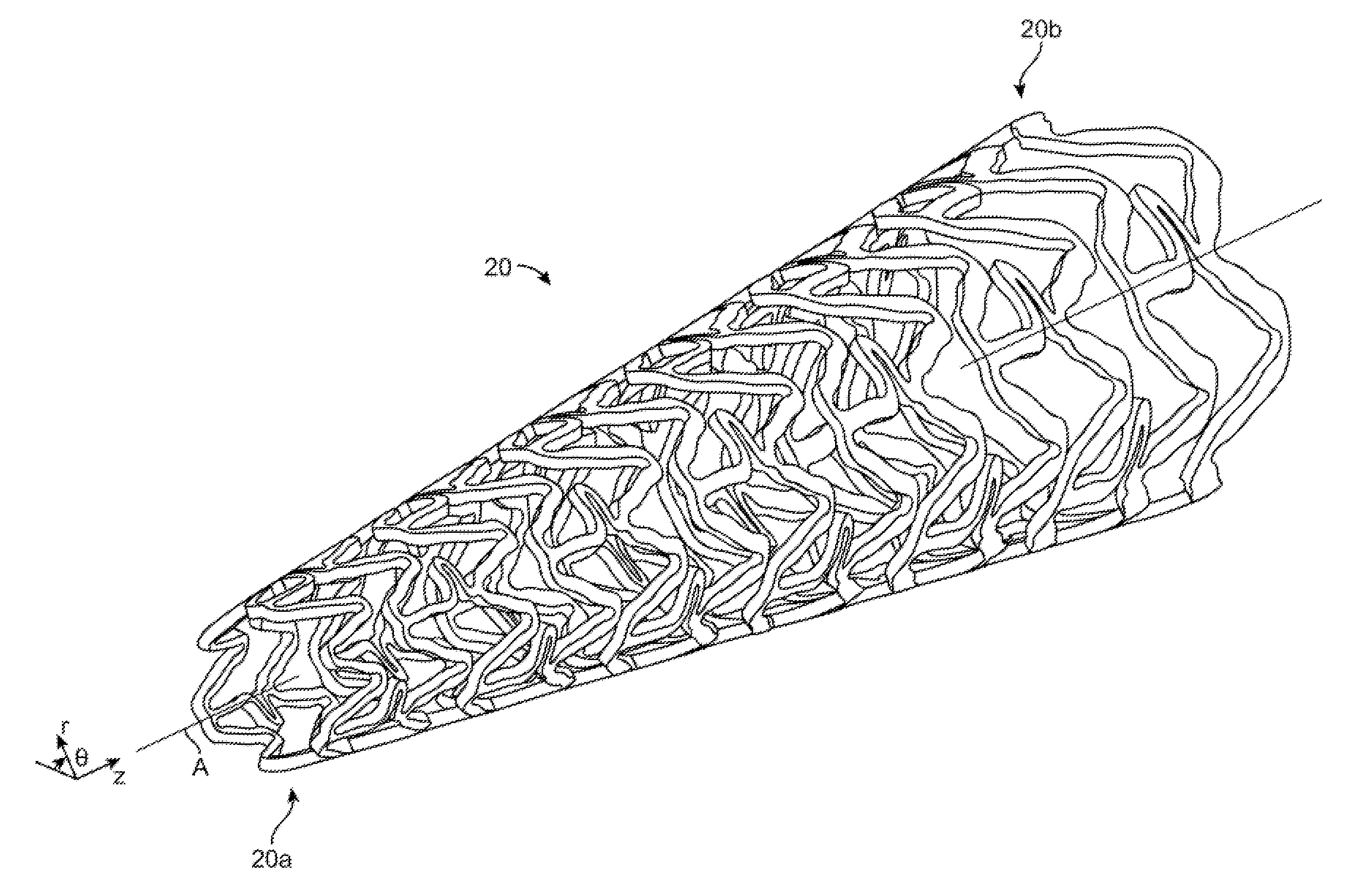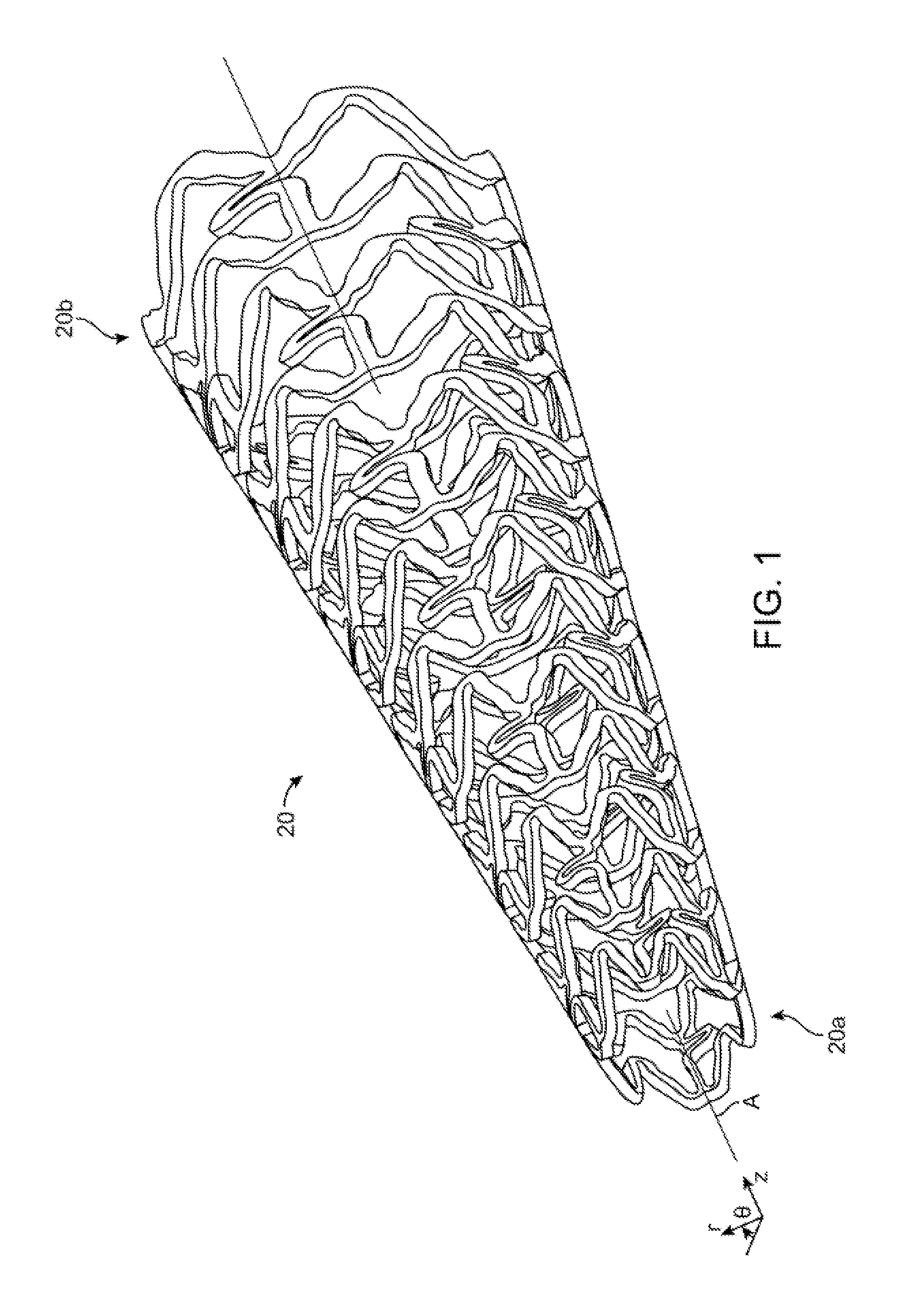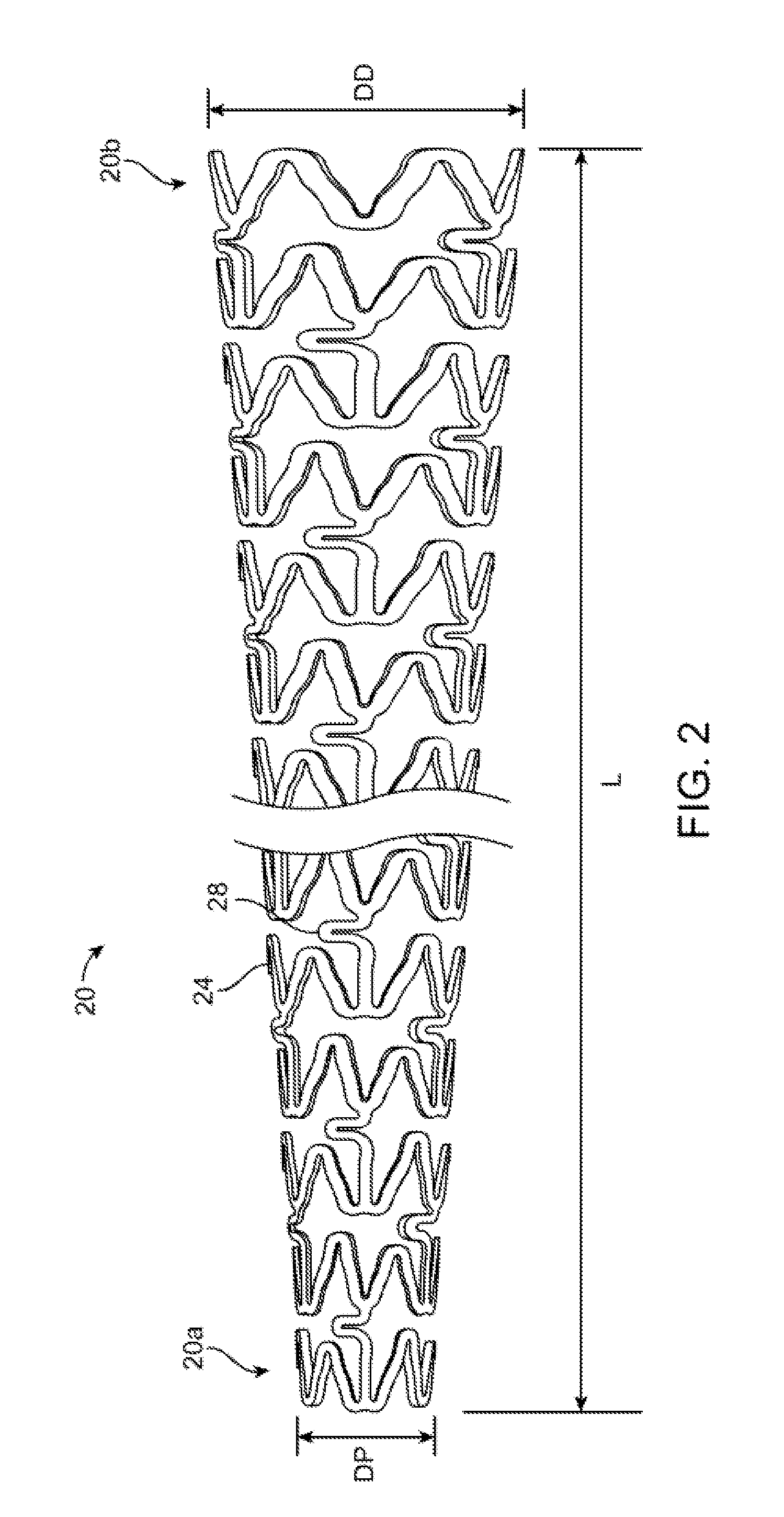Tapered scaffolds
- Summary
- Abstract
- Description
- Claims
- Application Information
AI Technical Summary
Benefits of technology
Problems solved by technology
Method used
Image
Examples
example a
[0141]Arteriovenous fistulae are becoming a primary method of vascular access for hemodialysis patients. Still, failure rate is high often due to non-maturation of fistula due to complex hemodynamic factors within vessels. By implanting a prosthesis that is capable of functioning as a coupler between the artery and vein, one can better control the velocity profile within / between the vessels, thereby reducing areas of low / oscillatory shear stress, minimizing neointimal growth, and reducing the prevalence of stenosis within the fistulae space.
[0142]According to one embodiment, the scaffold 20 is used as an intravascular support for supporting a venous portion of an arteriovenous fistula (AVF). According to this application the proximal end 20a would be located nearest the fistula and the distal end 20b would be located furthest the fistula. As the vein matures the size increases. The taper angle for the frustum scaffold may vary from about 5 to 8 degrees up to 10 to 12 degrees. Genera...
example b
[0170]This embodiment pertains to the scaffolds 40 or 60 (see FIGS. 5A-5C). According to this example, the scaffold when implanted can exhibit low mechanical trauma; hence, it can reduce if not eliminate any hyperplastic cellular response. Hyperplastic cellular response is known to cause soft-tissue stenosis or obstruction.
[0171]Referring to TABLE B, below, the overall size, i.e., diameter ranges and lengths, accommodates the various diameters encountered for longer vasculature that taper with length. These geometries are far more practical utilizing AM methods and in several of the embodiments outlined below it will be understood that traditional manufacturing methods for scaffold made from a tube cannot be used, or are simply impractical and of little value or utility in achieving stated the above-stated goals for tapered scaffolds.
TABLE BEmbodiment 2:Flared End polymeric scaffold, absorbed or durable polymer.Properties:Thickness range, t = 75-150 μm and constant for all struts an...
example c
[0172]This embodiment pertains to scaffolds 70, 80 or 90. The scaffold is an AV graft for dialysis access. The ranges given in TABLE C reflect the expected range of vein and artery sizes. These geometries are far more practical utilizing AM methods and in several of the embodiments outlined below it will be understood that traditional manufacturing methods for scaffold made from a tube cannot be used, or are simply impractical and of little value or utility in achieving stated the above-stated goals for tapered scaffolds.
TABLE CEmbodiment 3:Polymeric scaffold, Absorbable or durable, with a porous jacketProperties:Scaffold or stent properties the same as embodiments 1 or 2.A durable or absorbable polymer jacket with axially varying porosity willbe applied over the scaffold.Jacket / sheath porosity Pgraft(z) will be designed at distal 2-5 mm at avalue range of (40-80 μm pore size) for Section B, proximal 2-5 mm at avalue range of (40-80 μm pore size) for Section A; constant overrest of ...
PUM
| Property | Measurement | Unit |
|---|---|---|
| Fraction | aaaaa | aaaaa |
| Pressure | aaaaa | aaaaa |
| Pressure | aaaaa | aaaaa |
Abstract
Description
Claims
Application Information
 Login to View More
Login to View More - Generate Ideas
- Intellectual Property
- Life Sciences
- Materials
- Tech Scout
- Unparalleled Data Quality
- Higher Quality Content
- 60% Fewer Hallucinations
Browse by: Latest US Patents, China's latest patents, Technical Efficacy Thesaurus, Application Domain, Technology Topic, Popular Technical Reports.
© 2025 PatSnap. All rights reserved.Legal|Privacy policy|Modern Slavery Act Transparency Statement|Sitemap|About US| Contact US: help@patsnap.com



